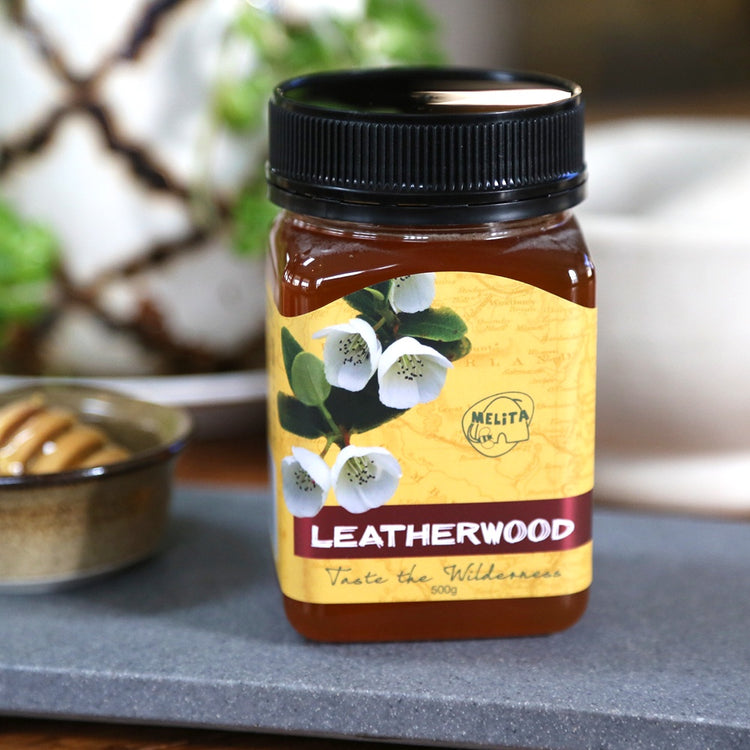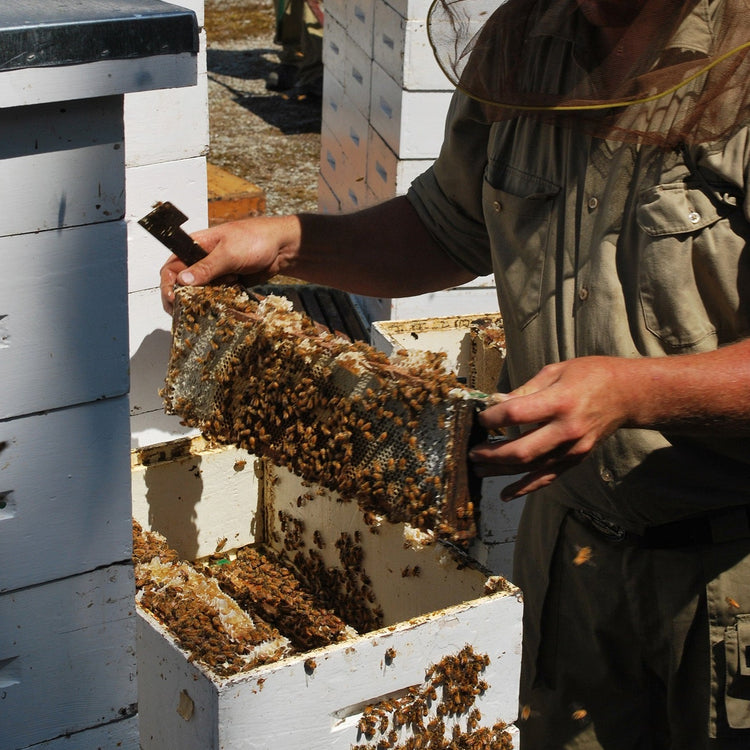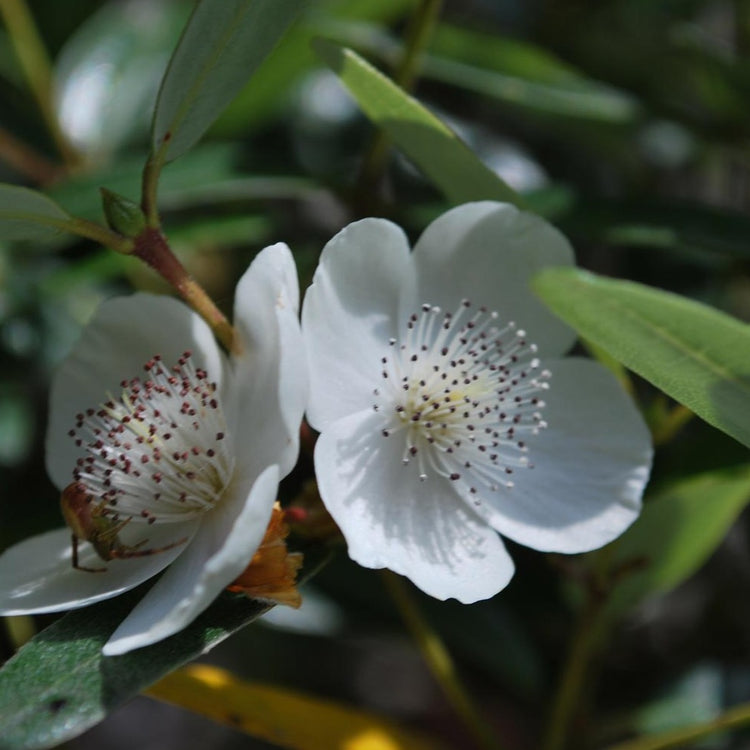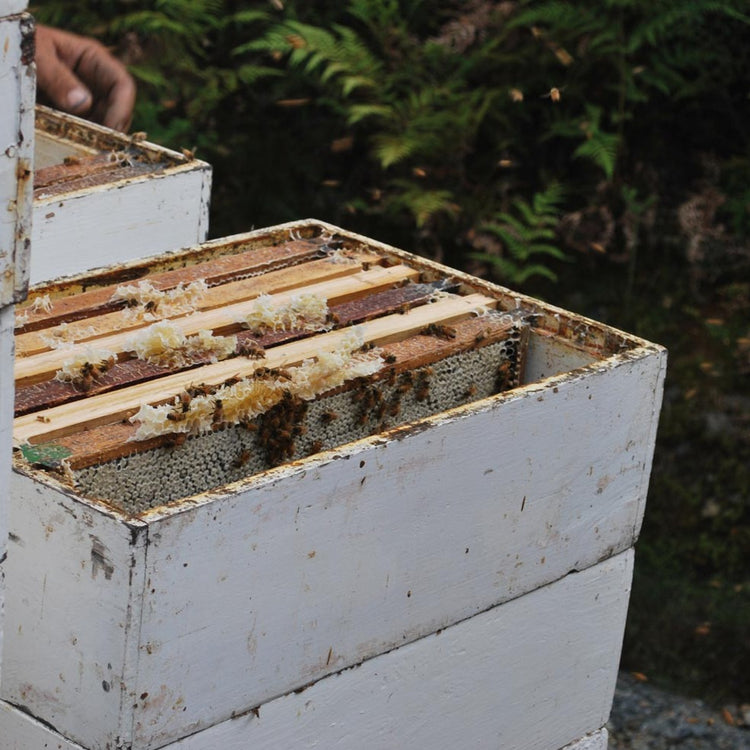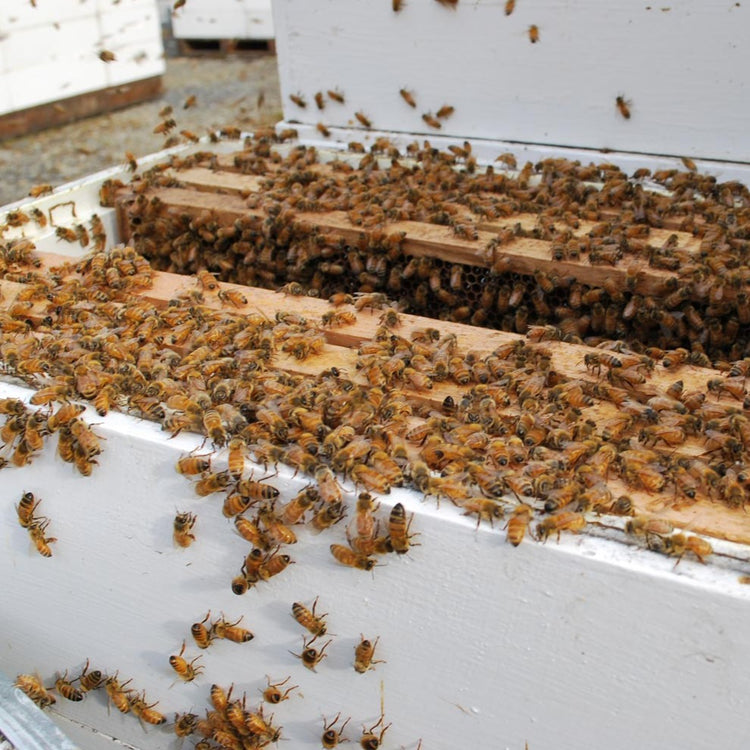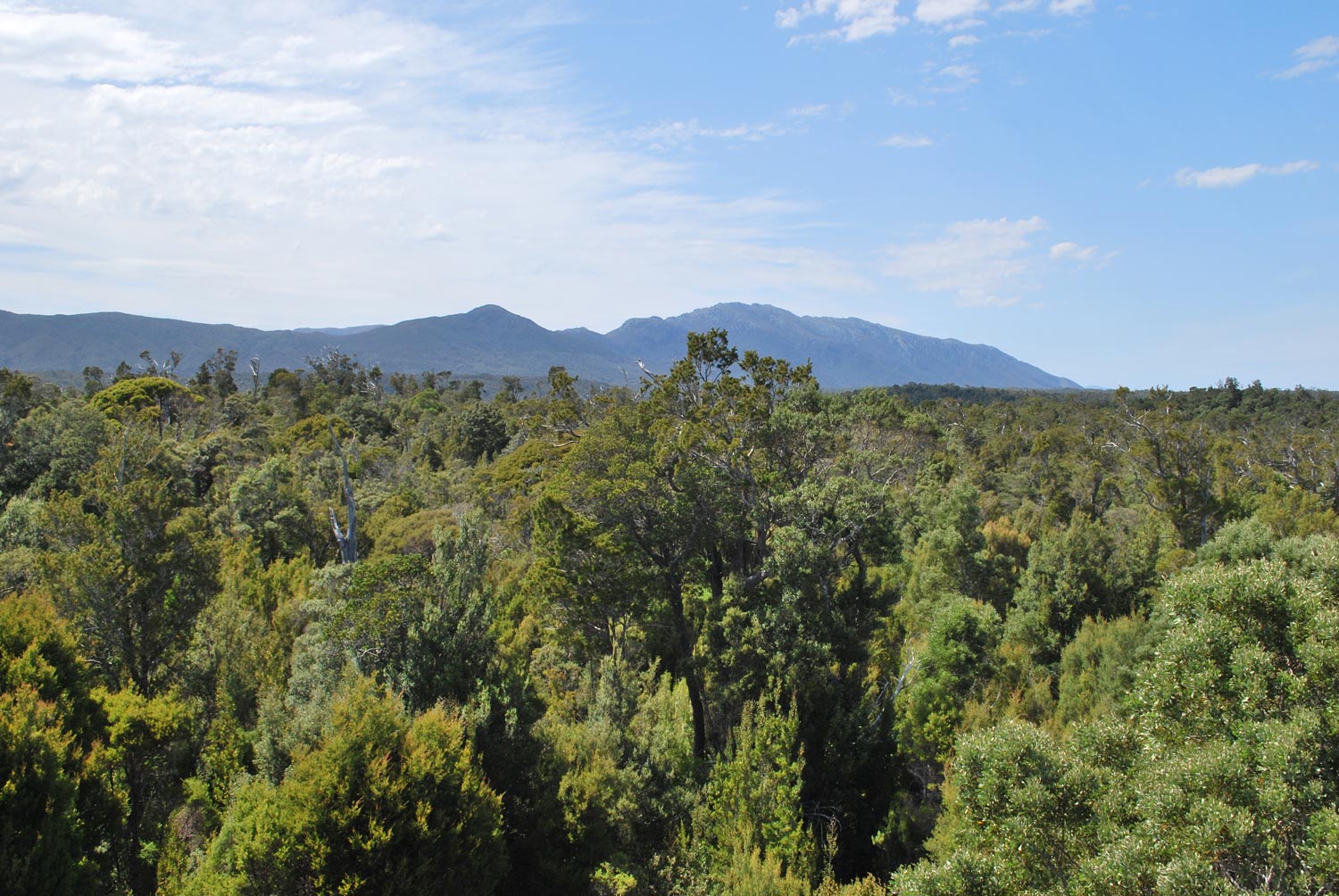Melita
Leatherwood Honey
Tasting Notes: Melita Leatherwood Honey has a distinctively unique musky aroma and gritty, tannic texture that has no easy comparison. Candied and caramelised citrus fruits come to mind as do fresh rosemary and lavender. The flavours tingle in the mouth.
Serving Suggestions: The unique flavours of Melita Leatherwood Honey are best appreciated on their own - spread on toast, stirred into a bowl of fresh yoghurt, or drizzled into a fine black tea. Honey perfection.
Couldn't load pickup availability





Where does Leatherwood Honey come from?
Late each summer the Leatherwood trees bloom deep within the vast untouched Tasmanian wilderness. The most prolific flowering trees are those that are 175-210 years old. The bees fly deep into the lush green forests, where they collect the sweet nectar from the pale white flowers. This pure and aromatic honey is truly world class and produced almost exclusively in Western Tasmania.
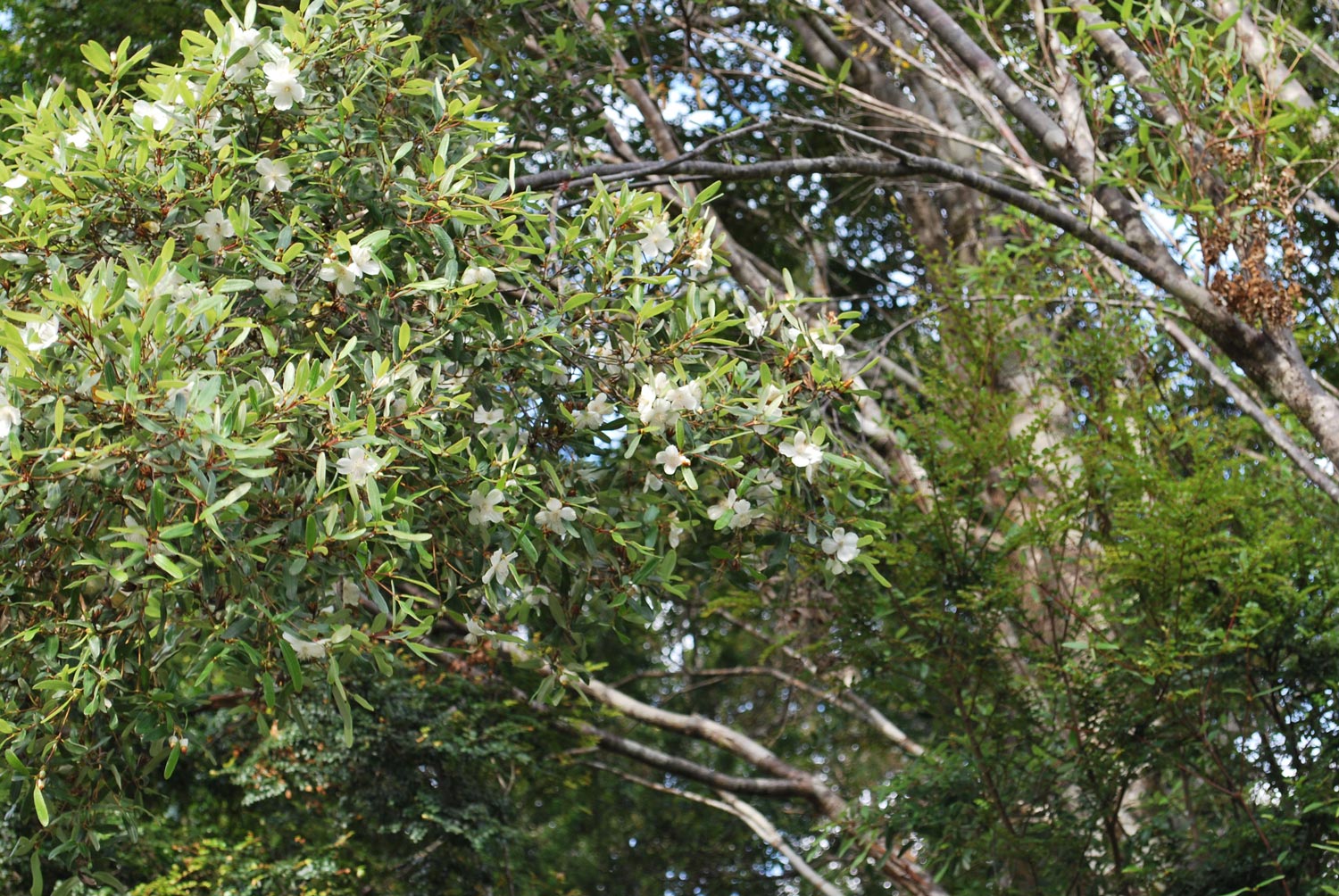
Health Benefits of Leatherwood Honey
Leatherwood honey is rich in antioxidants and also boast prebiotic properties. The honey can be used as a natural antiseptic and it has antimicrobial and antibacterial properties that can assist in wound and burn healing.
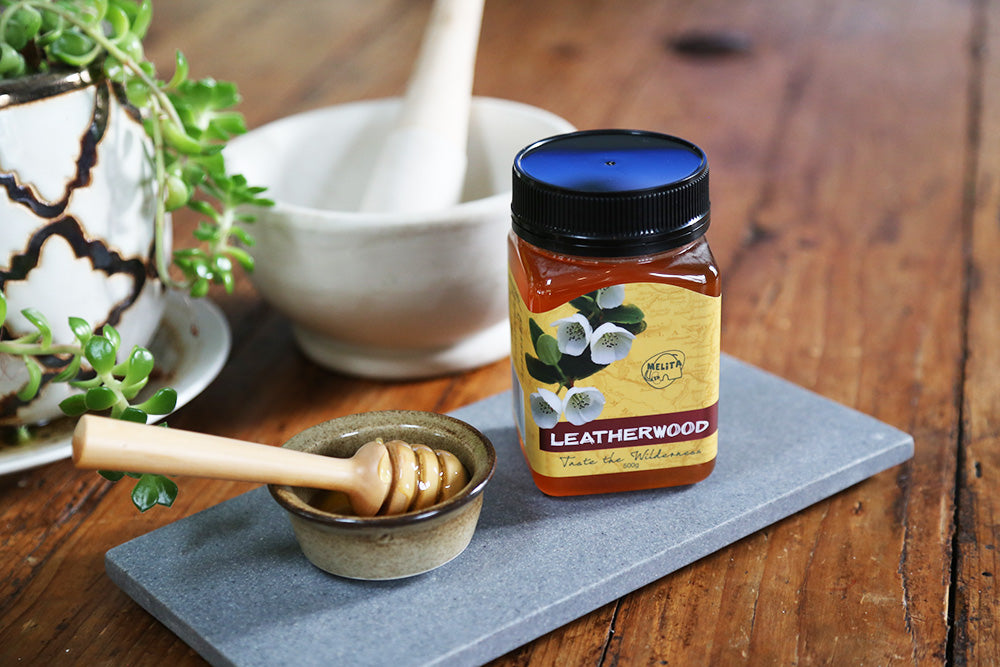
Why is Leatherwood Honey so expensive?
In the summer of 2018-2019 vast areas of Leatherwood trees were lost in bushfires. Leatherwood trees do not regenerate after bushfire. This loss will be felt for many years to come.
In addition to bushfires another problem that is faced by Tasmanian beekeepers is weather - the leatherwood flower is extremely delicate and weather conditions on the West Coast of Tasmania can be extremely harsh. A strong gust of wind is enough to dislodge the delicate flower from the tree - no flower, no nectar, no honey.
Leatherwood trees also require lots of moisture and recent seasons have been very dry. This reduces the flow of nectar from the trees.

